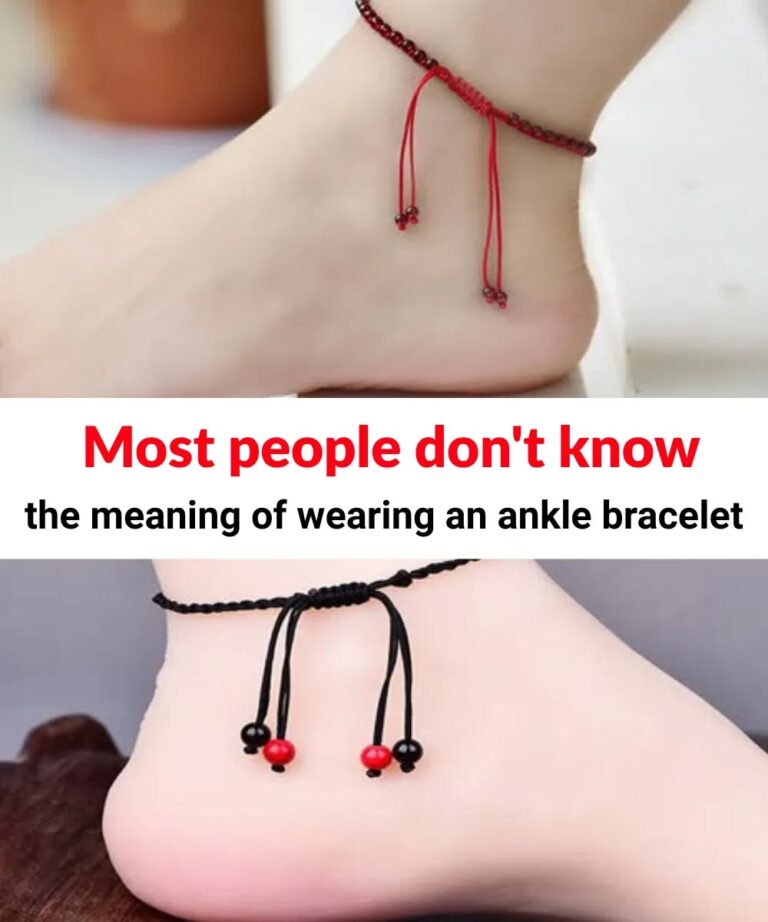Lightweight, stylish, and subtly captivating, ankle bracelets—often called anklets—have long been a staple in the world of fashion. While many people wear them today as simple accessories to enhance their personal style, their story actually stretches back thousands of years and across multiple cultures.

From ancient civilizations to modern fashion runways, the ankle bracelet has carried meaning far beyond its decorative appeal. So, what does it really mean to wear an ankle bracelet, and where did this timeless trend begin? The anklet has roots in some of the world’s earliest societies, and its meaning has evolved dramatically over time. In ancient Egypt, anklets were far more than mere accessories—they were believed to offer protection and bring good luck. Egyptians saw them as talismans, and many were designed with small pendants or charms that would jingle as the wearer walked. These charms weren’t just for show; the sounds were thought to ward off evil spirits and even help deter insects, especially for laborers working long hours in the fields.
In India, the anklet holds deep cultural significance and is especially important in traditional marital customs. Typically made of silver and sometimes ornately designed, anklets are worn by married women as a symbol of their marital status and familial role. The gentle sound they make while walking is often considered elegant and feminine, adding a musical rhythm to a woman’s movements.
These anklets are more than just jewelry—they represent tradition, commitment, and cultural identity. Moving westward, Arabian cultures have also embraced anklets, although the interpretations vary widely. Tales from One Thousand and One Nights often reference women adorned with anklets, but historical context changes the meaning. In some regions, anklets were used to signify a woman’s profession or social standing, sometimes associated with dancers or women on the fringes of society. Of course, these interpretations shift dramatically depending on the specific time period and cultural setting, making it difficult to assign one universal meaning.
In Sumerian and Roman societies, anklets were clear indicators of wealth and social status. The more ornate and precious the material, the higher the rank of the woman wearing them. Gold and gem-encrusted anklets were reserved for the elite and served as a way to showcase both family wealth and personal refinement. Wearing a luxurious anklet was as much a public statement as it was a fashion choice. Fast forward to today, and anklets have shed most of their historical meanings to become versatile and expressive elements of modern fashion. Especially popular in the warmer months, they pair perfectly with open-toe shoes, sandals, or even bare feet, subtly highlighting the ankle with a touch of sparkle or color. Modern anklets are all about personal expression, whether you’re channeling a beachy boho vibe or aiming for something sleek and sophisticated. You’ll find anklets in every material and style imaginable. Classic gold and silver options provide timeless elegance and are great for dressier occasions. Beaded and shell anklets give off a relaxed, beachy look that’s perfect for summer vacations or casual days out. Colorful string anklets with small charms or initials are playful and fun, ideal for daily wear or as a meaningful gift. One question that comes up often is whether the anklet should be worn on the left or right ankle. The truth is, there’s no strict rule here. In some cultures or communities, certain sides may carry different connotations, but generally speaking, it’s all about what feels right for you. Wear it on the ankle that feels most comfortable or that suits your outfit and shoe choice for the day. Whether it’s a nod to ancient tradition or a simple expression of your style, the ankle bracelet continues to be a piece of jewelry that carries elegance, individuality, and a bit of history with every step. From symbolic roots in the past to fashion-forward trends of today, anklets offer a unique way to connect with different cultures while celebrating your own personal flair.





